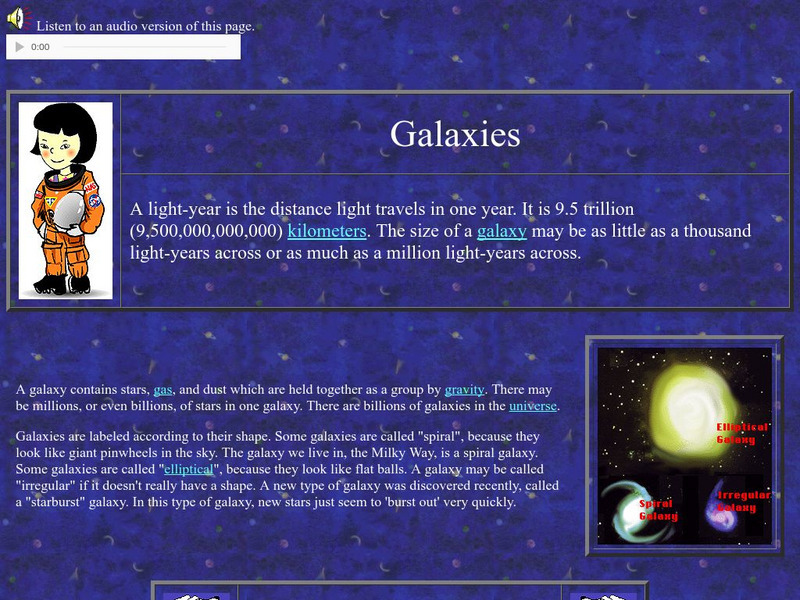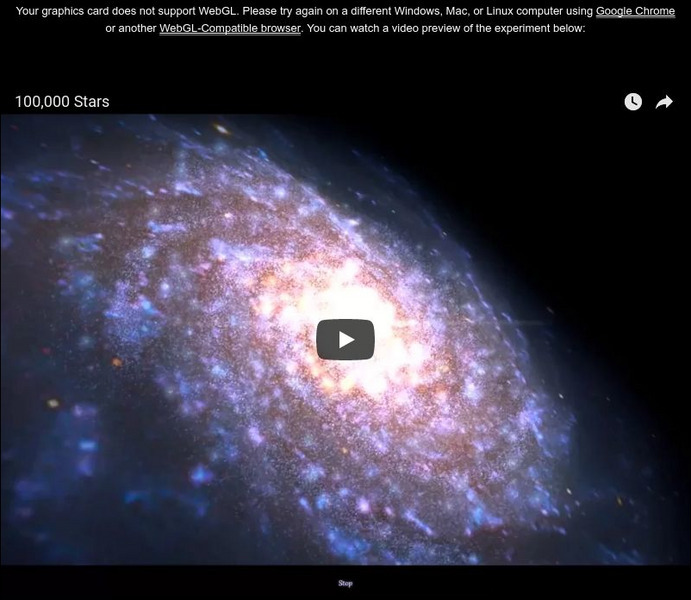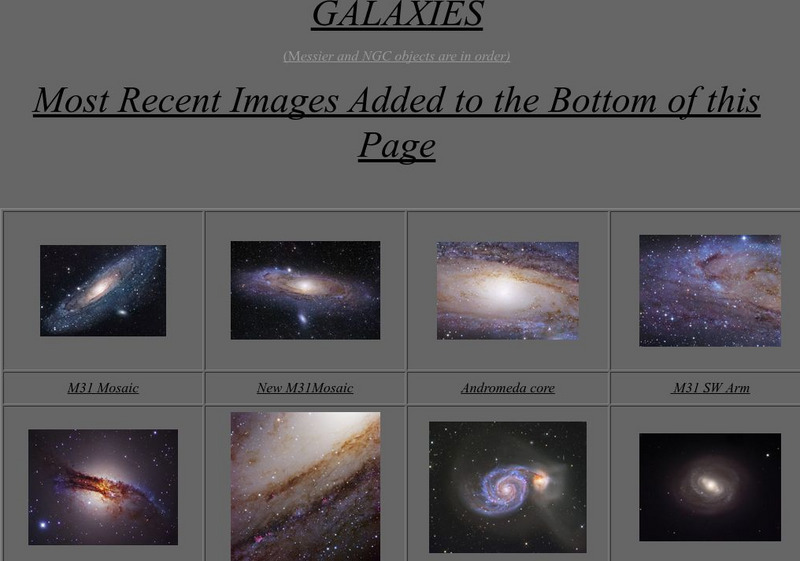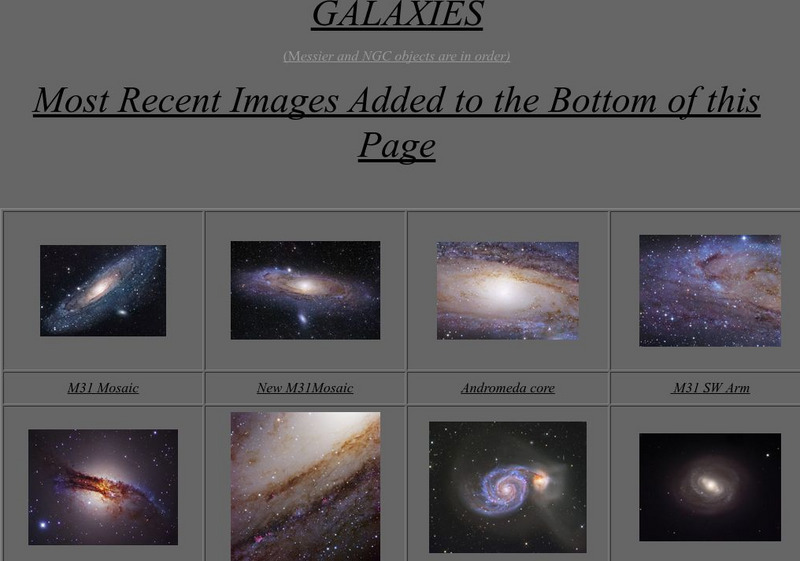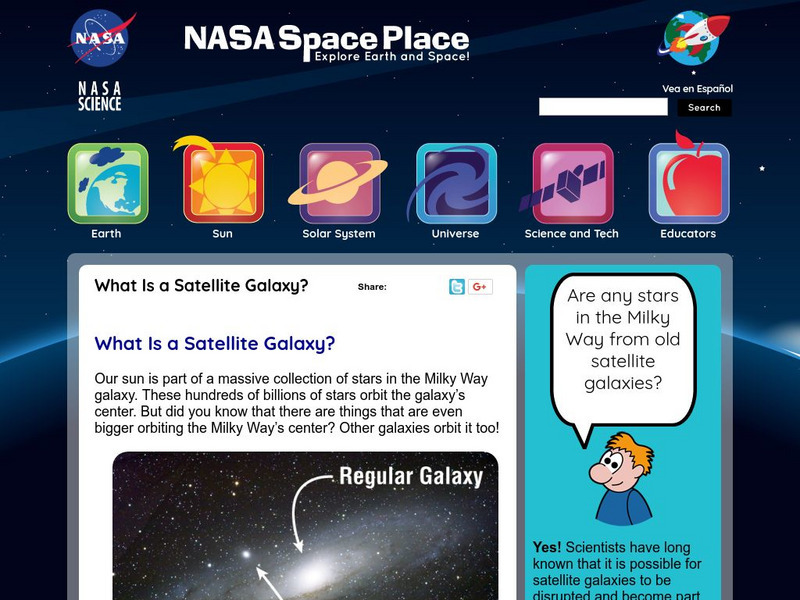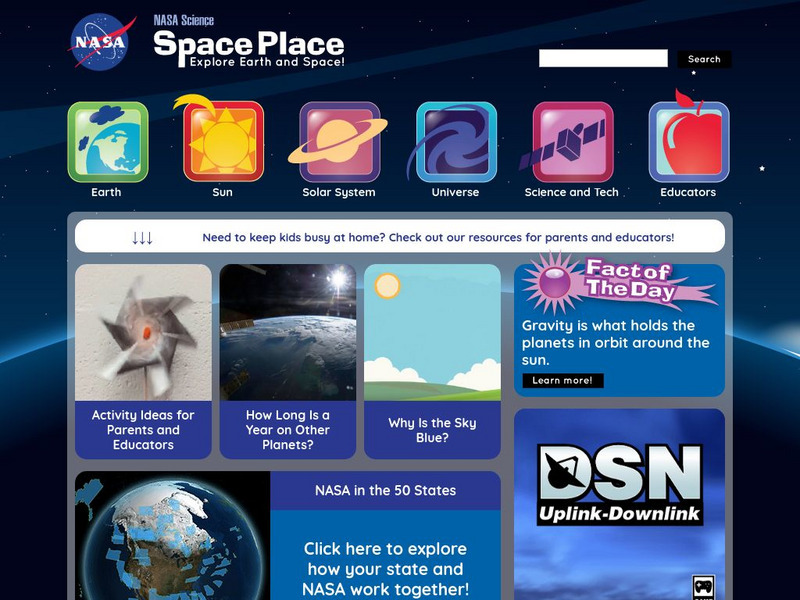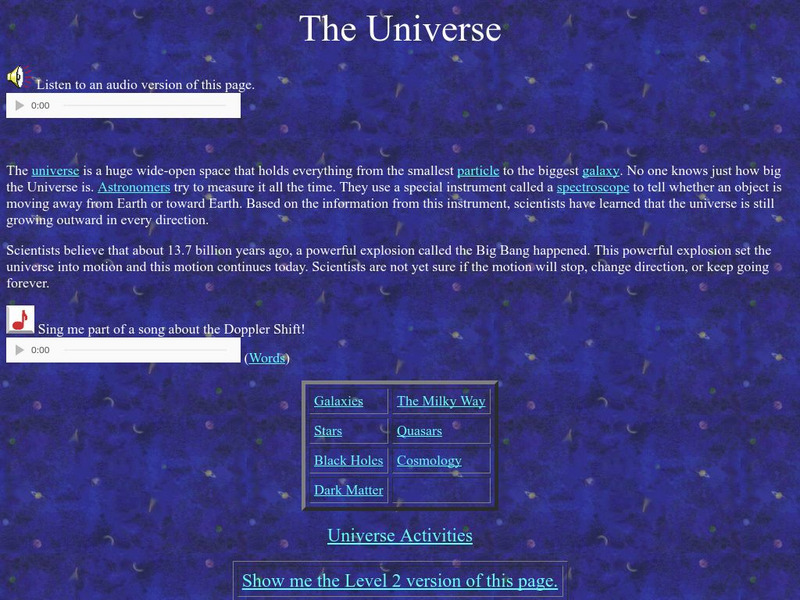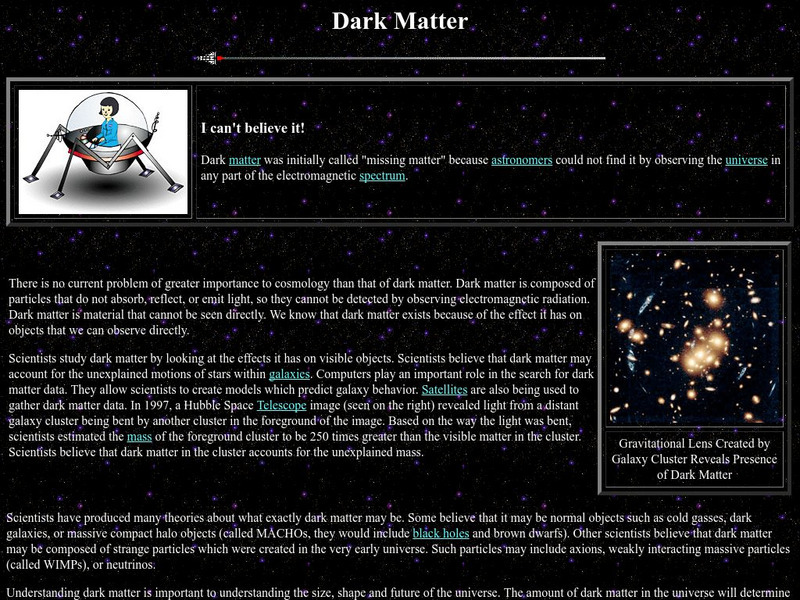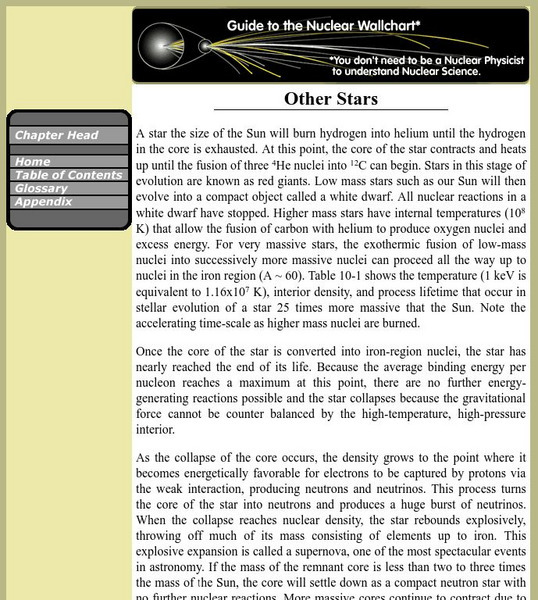Hi, what do you want to do?
Other
University of Leicester: Irregular Galaxies
Provides a general overview of irregular galaxies, including a specific look at type I and type II irregulars.
NASA
Nasa Star Child: Galaxies (Level 1)
This site provides an introduction to galaxies for the younger student, that is divided into 2 levels of understanding. Find out what type of galaxy looks like a giant pinwheel. Audio content included. Good glossary, and a printable...
Other
Chrome Experiments: 100,000 Stars
Zoom in and out to explore our galaxy in this interactive 3D visualization of the stellar neighborhood, including over 100,000 nearby stars.
NASA
Nasa Star Child: Galaxies
This resource has two levels: one for younger viewers and one for older viewers. It surveys the basic galaxy types and provides details.
Other
Astrophotography: Galaxies
Numerous high quality images of galaxies can be found in this site. Names, exposure times, and various magnifications are provided.
Other
Astrophotography: Galaxies
Numerous high quality images of galaxies can be found in this site. Names, exposure times, and various magnifications are provided.
NASA
Nasa Space Place: What Is a Galaxy?
This resource explores the different types of galaxies through text and images.
NASA
Nasa: Space Place: What Is a Satellite Galaxy?
Find out about the behavior and characteristics of the many satellite galaxies that orbit other galaxies.
NASA
Nasa Star Child: Star Child
StarChild from NASA defines and describes the Solar System in a simple and easy-to-understand manner. The website is broken down into two versions for the student, grade school and junior high.
NASA
Nasa: Star Child: Elementary Astronomy Unit
Learn everything you can about outer space with this interactive astronomy unit. 2 levels of difficulty with modules on the solar system, the universe, other "space stuff" and a glossary of terms. Links for parents and other great website.
NASA
Nasa Star Child: The Universe (Level 1)
This site provides an introduction to the origin of the universe for the young child and the Big Bang theory. There is also a song about the Doppler Shift. Vocabulary glossary and printable version available.
NASA
Nasa Star Child: Infrared Astronomy Satellite (Iras) (Level 2)
A brief description of Infrared Astronomy Satellite (IRAS) project and its discoveries. Complete with graphics, links to a glossary of terms, and a printable version of the page.
NASA
Nasa Star Child: Dark Matter (Level 2)
This site provides a description of "dark matter" and how scientists study it. Vocabulary words linked to a glossary of terms, and a printable version are also available on the site.
NASA
Nasa Star Child: Dark Matter (Level 1)
This site provides a description of "dark matter" and how scientist study it.
Space Telescope Science Institute
Hubblesite: News Center Release Archive
This site from Hubblesite has a very long list of Hubble Space Telescope Images listed by subject. General categories of subjects include Solar System, Stars, Nebulae, Star Clusters, Novae, Supernovae, Stellar evolutionn, Galaxies, and...
Other
University of Leicester: Elliptical Galaxies
Provides a general overview of elliptical galaxies, including a look at what defines an elliptical galaxy, what determines its shape, and it's physical nature.
Space.com
Space: Astronomers Surprised: Stars Born Near Black Hole
Black holes seem to be a constant point of debate for astronomers. This article confirms the theory that black holes can help form massive stars and gives more support to the idea that black holes play a big role in galaxy formation....
Space.com
Space: Astronomers Surprised: Stars Born Near Black Hole
Black holes seem to be a constant point of debate for astronomers. This article confirms the theory that black holes can help form massive stars and gives more support to the idea that black holes play a big role in galaxy formation....
NASA
Nasa Star Child: Stars
This page details the life cycle of a star, and includes information on medium-sized and massive stars, plus a glossary and a question.
Other
Seds Usa: Charles Messier
Charles Messier (1730-1817 CE) is credited for discovering 13 comets. He also began the Catalog of Nebulae and Star Clusters. This catalog as well as a great deal of information on Messier is available here. The Messier objects are also...
Mocomi & Anibrain Digital Technologies
Mocomi: What Is a Galaxy?
Explains what galaxies are and their different shapes. Includes details on the Milky Way.
PBS
Pbs Learning Media: Spin a Spiral Galaxy
This interactive activity from NOVA Online lets you spin a spiral galaxy, including our own Milky Way. It demonstrates that what you can learn from visible light observations of a galaxy is largely determined by the angle from which you...
Lawrence Berkeley National Laboratory
Berkeley Lab: Other Stars
Describes other stars besides the sun in our galaxy and the major stages in the evolution of a massive star.
University of Texas at Austin
The University of Texas Mc Donald Observatory: Stars and Galaxies
Do galaxies collide? Apply concepts of scale to grasp the distances between stars and galaxies.






